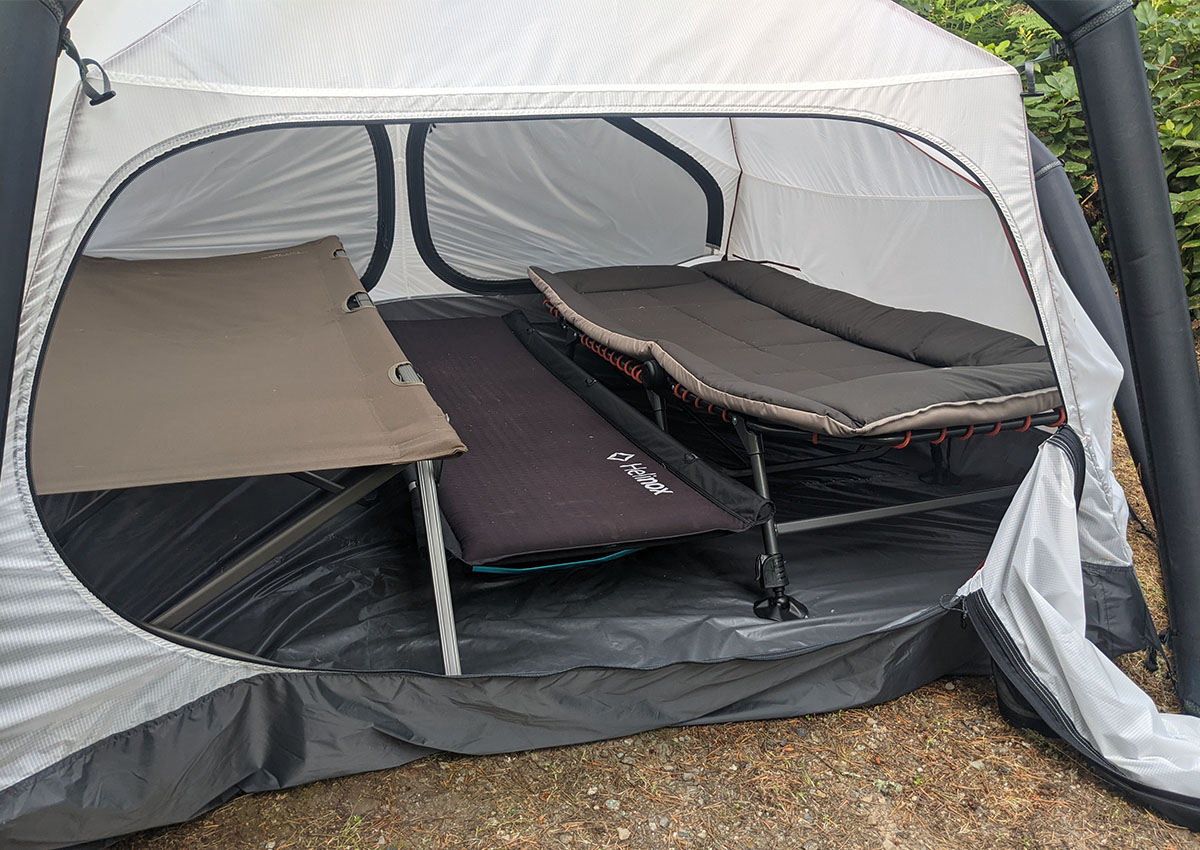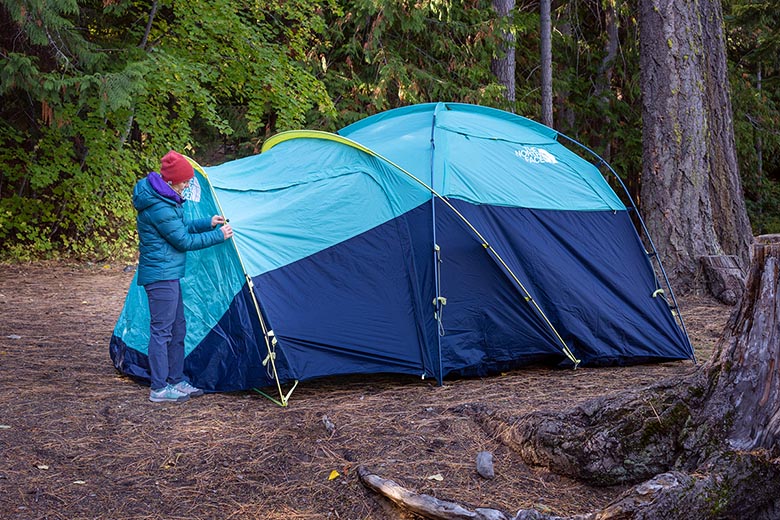
Introduction
The camping tent is a crucial piece of equipment for any outdoor enthusiast, providing shelter, protection, and a cozy home away from home in nature. In this comprehensive guide, we will explore all aspects of camping tents, from understanding their different types and features to important considerations when selecting the perfect tent for your outdoor adventures. Whether you’re a seasoned camper or new to the world of camping, this guide will help you make informed choices and ensure a comfortable and enjoyable camping experience.
Part 1: Types of Camping Tents
Level 1: Backpacking Tents
Backpacking tents are lightweight, compact, and specifically designed for hikers and backpackers who prioritize portability. These tents are easy to set up and take down, and they provide sufficient protection from the elements while minimizing weight and pack size.
Level 2: Family Camping Tents
Family camping tents are spacious and designed to accommodate multiple people, making them ideal for camping trips with the entire family. These tents offer a comfortable sleeping area, ample headroom, and often include additional features like dividers for privacy and vestibules for extra storage space.
Part 2: Important Tent Features
Level 1: Tent Capacity and Layout
Consider the number of people who will be using the tent and the amount of gear you plan to store inside. Tent capacity defines how many people can sleep comfortably, while layout options can vary, with some tents offering sleeping areas and separate living spaces.
Level 2: Tent Materials and Weather Resistance
Tent materials play a crucial role in determining durability, weight, and weather resistance. Look for waterproof and durable materials like polyester or nylon, with higher denier ratings for increased tear strength. Pay attention to the tent’s waterproof rating and the presence of a rainfly for added protection against the elements.
Part 3: Tent Setup and Portability
Level 1: Tent Setup Ease
Consider the ease of setting up the tent, especially if you anticipate arriving at the campsite late or in unfavorable weather conditions. Freestanding tents are generally easy to set up and can be moved around before securing them with stakes, while non-freestanding tents require careful placement and anchoring.
Level 2: Tent Weight and Packability
For backpackers, the weight and packability of the tent are crucial factors. Lightweight tents made of lightweight materials like silnylon or cuben fiber are suitable for hikers who aim to carry minimal weight. On the other hand, car campers may prioritize space and comfort over weight, opting for larger tents that can be transported easily in a vehicle.
Part 4: Tent Care and Maintenance
Level 1: Tent Cleaning
Proper tent care and maintenance are crucial for prolonging its lifespan. Regularly clean your tent after each trip to remove dirt, debris, and stains. Use a mild soap or specialized tent cleaner, rinse thoroughly, and allow the tent to air dry before storing it.
Level 2: Tent Storage
When not in use, do not store the tent while wet or damp, as this can lead to mold or mildew growth. Instead, ensure the tent is completely dry before folding and storing it in a cool, dry place. Avoid storing it in tightly compressed bags, as this can weaken the tent’s materials and reduce its lifespan.
Part 5: Tent Accessories and Add-Ons
Level 1: Tent Footprints and Ground Cloths
Tent footprints or ground cloths serve as protective layers placed beneath the tent to safeguard the floor from abrasions, moisture, and punctures. They extend the lifespan of the tent by acting as a barrier between the tent floor and the ground, providing an additional layer of defense against wear and tear.
Level 2: Tent Repair Kits
Having a tent repair kit on hand is essential for addressing unexpected damages in the field. These kits usually contain adhesive patches, fabric swatches, seam sealer, and tools for easy repairs. Regular inspections of the tent and timely repairs can prevent minor issues from escalating into more significant problems.
Part 6: Environmental Considerations and Responsible Camping
Level 1: Leave No Trace Principles
Adhering to the Leave No Trace principles when camping ensures that outdoor spaces are preserved and protected, minimizing the impact on the environment. Responsible camping practices, such as leaving campsites as they were found, properly disposing of waste, and respecting wildlife habitats, help maintain the natural beauty of outdoor areas for future generations.
Level 2: Sustainable Choices and Eco-Friendly Materials
Consider opting for tents made from sustainable and eco-friendly materials, such as recycled fabrics and low-impact dyes. Additionally, reducing waste by repairing and maintaining tents instead of replacing them frequently aligns with environmentally conscious practices. Making sustainable choices when selecting camping gear contributes to the preservation of natural resources.

Conclusion
Choosing the right camping tent is essential for a comfortable and enjoyable camping experience. By understanding the different types of tents, important features to consider, and factors like setup ease, portability, and maintenance, campers can make informed decisions that align with their specific needs and preferences. A well-selected and properly cared-for tent will provide reliable shelter and protection, making your outdoor adventures even more memorable. So, equip yourself with the knowledge from this guide, choose wisely, and let your camping tent be your cozy sanctuary in the great outdoors.
With the knowledge gained from this guide, campers can make informed decisions when choosing a camping tent, ensuring that it meets their specific needs, preferences, and environmental considerations. A well-selected tent, complemented by the right accessories and a commitment to responsible camping practices, will offer a comfortable and sustainable shelter in the great outdoors. By investing in a quality tent, caring for it diligently, and minimizing the impact on the environment, campers can enjoy memorable outdoor experiences while preserving the beauty and integrity of natural landscapes for generations to come.
In summary, a camping tent serves as a vital component of any outdoor adventure, providing shelter, comfort, and protection from the elements. By understanding the diverse types of tents, important features, setup, care, and environmental considerations discussed in this comprehensive guide, campers can confidently select the perfect tent for their needs. Whether embarking on a solo backpacking trip or enjoying a family camping experience, a well-chosen tent, complemented by responsible camping practices, ensures a memorable, enjoyable, and sustainable outdoor experience. Embrace the freedom of the great outdoors with the confidence that your tent will serve as a reliable sanctuary amidst nature’s wonders.


